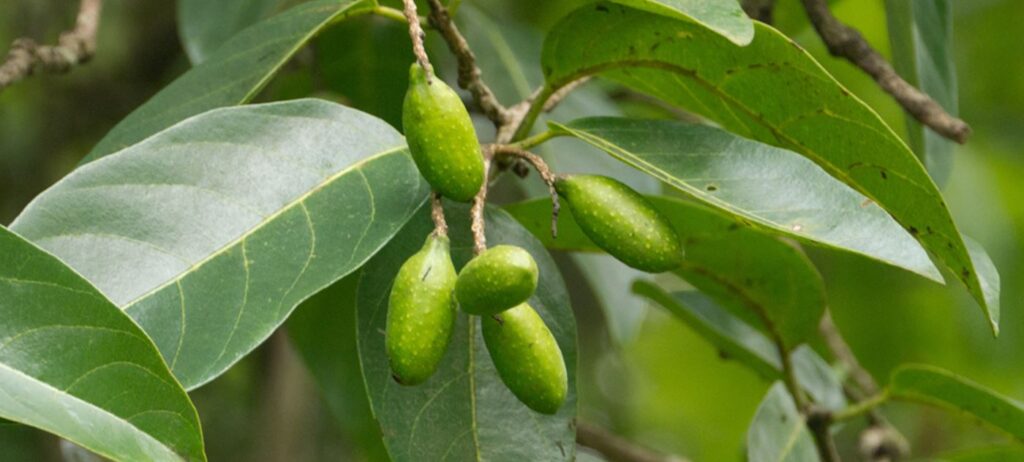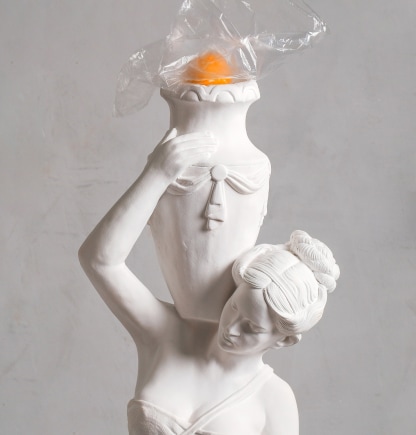Haritaki was one ayurvedic herb I had always heard about since childhood, there were many actually but nothing really matched the ranks of this wonder herb whose scientific name happens to be Chebulic Myrobalan. It was the curiosity about the multitalented herb that made me dive into finding what it was all about. So, I read a lot and here’s what I learnt.
Though popularly also known as “The king of medicines”, this herb comes from the seeds of Terminalia Chebula tree belonging to Combretaeceae family. These trees are 30m tall and are found upto altitude of 1500m in the tropical and sub tropical regions of India, Nepal, China, Sri Lanka, Malaysia and Vietnam. These trees are deciduous and alternately arranged oval leaves, dull whitish yellow flowers and a very strong pungent smell.
Owing to it’s importance, it is mentioned a lot in the Ayurvedic and Tibetan literature. It is “Tridoshic”, meaning it has the capacity to balance all the three doshas vata, pitta and kapha. The fruit rind is used in the very famous Triphala churna. Some of it’s characteristics being anti-viral, anti-bacterial, anti-fungal and anti-inflammatory. Some people even call it the Indian walnut or Indian hog plum.
Haritaki is not just one plant and one type, there are many varieties :
- Vijaya : This variety is mainly found in the Vindhya mountains in India. It is the shape of a gourd. It is given a lot of importance as it is useful in curing a lot of diseases and is used for both purificatory measures and preparation of malt( Avaleha) based products.
- Rohini : This variety is grown in Sindh(Jhansi) in India. The shape is round. This variety is used for consumption and for treating wounds.
- Putana : These grow in the Himalayas. It contains proportionately bigger stone. It is mainly used for external applications.
- Amrita : They grow in the Champa region in Madhya Pradesh in India. It is fleshy and is used as purgative.
- Abhaya : This too is found in the Champa region of Madhya Pradesh in India. Abhaya contains five ridges and it is used to cure eye diseases.
- Chetaki : It is found in the Himalayas in India. It is three ridges and is used for purgation. These are immature, unripe, small and stoneless fruits.
- Jivanti : It is found in the Saurashtra region in Gujrat, India.It is golden in color and is used in oleation therapy.
Though , these varieties are not very commonly known, it is always better to be equipped with this kind of knowledge before one goes to any ayurvedic shop.
Some of the phytochemical constituents of Haritaki are bioactive compounds like chebulin, chebulgic and corilagin. Antioxidants like pyrogallol, ferulic, vanillic, phloroglucinol and caeffic acid. Fatty acids like linoleic acid, oleic acid and palmitic acid and amino acids like glucose, quinnine and tannin.
Though, personally only triphala churna is something that I can vouch for, there are several health benefits this wondrous herb has to offer:
- Prevents Diabetes : Due to its hypoglycaemic property, it alleviates blood sugar levels. The production of insulin from beta-pancreatic cells becomes active after its consumption.It helps in breakdown of starch into glucose. Regular use brings down blood glucose levels and relieves from diabetic symptoms like frequent urination, excessive thirst and weight loss.
- Improves cognitive function : Powerful anti-oxidants and flavanoids present in this myrobalan improves memory, focus, concentration, calmness and alertness. There is delay in progression of neurodegenerative disorders like Parkinsons and dementia. It serves as memory boosting food, aids in reasoning, problem solving and other cognitive abilities.
- Aids in digestion : It is very helpful in treating esophagitis, heartburn, diarrhoea, flatulence, peptic ulcer, gastroesophageal reflux disease, indigestion, constipation etc. The carminative nature of fruit helps in breaking down food particles in stomach and enhances secretion of digestive juices thereby increasing absorption of essential nutrients through intestine.
- Promotes weight loss : It burns excess fat, detoxifies body by removing AMA toxins and reduces sudden hunger pangs. It reduces accumulation of LDL cholesterol by improving metabolism. Add a spoonful of Haritaki to a glass of warm water to shed away the excess fat.
- For wounds : It is used to treat wounds and infections due to its anti-bacterial, anti-viral, anti-fungal properties.
- For eyes : The potent chakushya property of Haritaki is good to treat dry eyes, watery eyes, inflamed eyes, stye infection and conjunctivitis.
- For skin : It is a natural toner as it flushes out toxins from the internal layers of the skin, treats various skin ailments like acne, pimples, rashes, boils etc.
- For hair : It is useful for treating dandruff, itching and hairfall.
All in all it is a multi-potent herb and has numerous uses, no wonder it is called the king-of-all-herbs. The science of herbs is an interesting study that keeps one engaged into the wonderland of traditional natural remedies.




